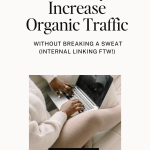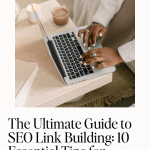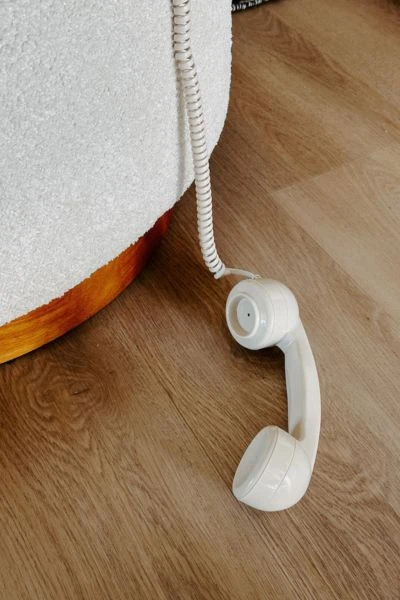This post may contain affiliate links. We may receive a commission for purchases made through these links (at no cost to you, of course! 🙂)
In order to maximize your website’s SEO results, a strong internal linking strategy is crucial. Internal linking refers to the practice of linking one page on your website to another, and it plays a significant role in improving website visibility and driving organic traffic. By incorporating a well-thought-out internal linking strategy, you can effectively boost your SEO performance and enhance the overall user experience on your site.
Good internal linking not only helps search engines to understand the hierarchy and structure of your website, but it also ensures that visitors can easily navigate through different pages and find relevant content. This, in turn, can lead to increased time spent on your site and lower bounce rates, both of which are important ranking factors for search engines.
In this article, we will delve into the importance of internal linking for SEO and explore how you can use internal linking best practices to enhance your website’s performance and visibility in search results.

What is the Difference Between Internal Links and Back Links?
The main difference between internal links and backlinks is the source and destination of the links. Internal links are links that connect one page of a website to another page within the same website, while backlinks are links from another website that lead to a specific page on your website.
Internal links are used to establish a website’s hierarchy, help users navigate the site, and distribute link equity within the website.
Backlinks, on the other hand, are important for SEO as they are seen as a vote of confidence from one site to another. They can improve a site’s ranking and visibility in search engine results.
In summary, internal links are important for website structure and user experience, while backlinks are crucial for off-site SEO and building domain authority.
Why Internal Links Are Important for SEO
Internal links are important for SEO for several reasons. They help search engines understand a website’s structure, pass authority to important pages, and improve user experience by helping users navigate the site and find related content. Here are some reasons why Internal links are important for your website’s SEO endeavours.
Establish Authority
Internal links are important for establishing authority for a subject, which is crucial for SEO. By creating a network of internal links within your website, you can build authority for the topics you are creating content around. This is in line with Google’s E-A-T (Expertise, Authoritativeness, Trustworthiness) concept, where a site that establishes itself as an authority for a subject has a higher chance of ranking for relevant queries within search engines
Help Users Navigate Your Site
Internal links are essential for helping users navigate your site, which is a key aspect of SEO. They improve the discoverability of a page from both a user and search engine perspective. If a page isn’t linked to, it becomes harder to find and is less likely to be crawled as often, if at all. Additionally, internal links help with the flow of equity a page has built up, allowing for pages deeper within a site to rank better for related terms.
Best Practices for Internal Linking
Internal linking is a crucial aspect of on-page optimization and SEO. It helps Google discover, crawl, and index pages on your website, and it also improves the user experience by making it easier for visitors to find relevant pages.
HERE ARE SOME BEST PRACTICES FOR INTERNAL LINKING THAT YOU SHOULD FOLLOW:
- Use relevant anchor text: Use descriptive keywords in anchor text that give a sense of the topic or keywords the source page covers.
- Link to relevant and authoritative pages: Link from authority pages to pages that almost rank. This helps establish an information hierarchy for the given website.
- Keep the link structure organized: Use hubs and spokes to boost rankings. This helps spread link equity (ranking power) around websites.
- Utilize breadcrumb navigation: Use internal linking to reduce page depth (link deep). This helps users navigate your site and reduces the number of clicks required to reach a page.
- Optimize the placement of internal links: Place contextual links within page copy. This helps establish site architecture and spreading link equity (URLs).
By following these best practices, you can create a strong internal linking structure that will help both Google and users navigate your site, and ultimately improve your SEO performance.
Tools to Aid Internal Linking
There are several tools available to help you optimize your internal linking structure. Here are some of the best tools to aid internal linking:
- Google Search Console: Use a tool like Google provides basic link analysis reports that can help you identify internal linking opportunities and issues.
- SEO plugins and extensions: Many SEO plugins and extensions, such as Yoast SEO and All in One SEO, offer internal link analysis and suggestion tools that can help you optimize your internal linking structure.
- Website crawling tools: Tools like Ahrefs and SEMrush can help you identify internal linking opportunities and issues by crawling your website and providing detailed reports on your internal linking structure.
Monitoring and Analyzing Internal Links
Monitoring and analyzing internal links is crucial for the overall health and performance of your website. By tracking the performance of internal links, you can gain insights into which pages on your site are receiving the most traffic and engagement.
HERE ARE SOME TIPS TO HELP YOU MONITOR & ANALYZE YOUR INTERNAL LINKS.:
Tracking the Performance of Internal Links
Tracking the performance of internal links is crucial to understand how effective they are in driving traffic and engagement on your website. By utilizing web analytics tools like Google Analytics, you can gain insights into metrics such as click-through rates, bounce rates, and conversions associated with each internal link. This data enables you to identify which internal links are performing well and which ones may need improvement.
Analyzing Link Juice Flow
Analyzing link juice flow refers to understanding how link authority and relevance are distributed within your website through internal links. By examining the flow of link juice, you can ensure that important pages receive a higher share of authority and relevance, ultimately improving their search engine rankings. Tools like Moz and Majestic offer features that allow you to visualize and analyze the link juice flow within your website.
Identifying and Fixing Broken Internal Links
Broken internal links can harm your website’s user experience and SEO efforts. They create frustration for users and hinder search engine crawlers from properly indexing your content. Regularly monitoring your website for broken internal links using tools like Broken Link Checker or Google Search Console helps you quickly identify and fix these issues. By ensuring all internal links are working correctly, you enhance user experience, maintain a healthy website structure, and improve SEO performance.
Common Mistakes to Avoid
Common mistakes to avoid in blogging include over-optimizing anchor text, using excessive internal links on a single page, and neglecting to update and maintain internal links. To prevent these mistakes, consider the following:
- Avoid over-optimizing anchor text: Using excessive or overly optimized anchor text can lead to poor user experience and negatively impact search engine optimization (SEO). Instead, use natural and relevant anchor text that accurately describes the content of the linked page.
- Limit internal links: While it’s essential to provide context and additional information to readers, using too many internal links on a single page can be confusing and distracting. Limit the number of internal links to maintain a clear and focused reading experience.
- Update and maintain internal links: Failing to keep internal links up-to-date and functional can lead to broken links and a frustrating user experience. Regularly review and update your internal links to ensure they are relevant and working properly.
In conclusion, implementing best practices for internal linking is crucial to maximize SEO results and boost your website’s visibility in search engine rankings. By understanding the importance of internal linking and following strategies such as using relevant anchor text, linking to authoritative pages, and organizing your link structure, you can enhance user experience, improve website navigation, and distribute link authority effectively.
Additionally, monitoring and analyzing internal links, avoiding common mistakes, and regularly maintaining and updating your links will further contribute to better SEO performance. By incorporating these best practices into your SEO strategy, you can set your website up for success and increase organic traffic, ultimately maximizing your SEO results.
If you liked this post, Pin it to Pinterest! 👇









Just saved this post on Pinterest, Candice! I always try to do internal links on my blog, but I could definitely brush up on things! This is a wealth of information for anyone looking into SEO!
Wishing you a wonderful weekend! 🙂
Make Life Marvelous
Thanks so much Ashley – Glad you found this post useful.